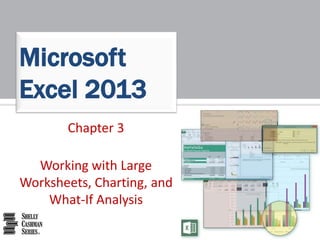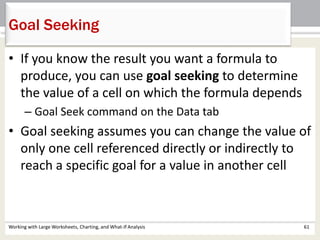This document provides objectives and instructions for using Excel 2013 to work with large worksheets, create charts and perform what-if analysis. It covers topics such as rotating text, creating month name series, formatting cells, inserting sparkline charts, applying chart filters, and using goal seek for what-if questions. The objectives are to learn skills for managing large worksheets, visualizing data through charts, and analyzing data through various what-if scenarios.


































































